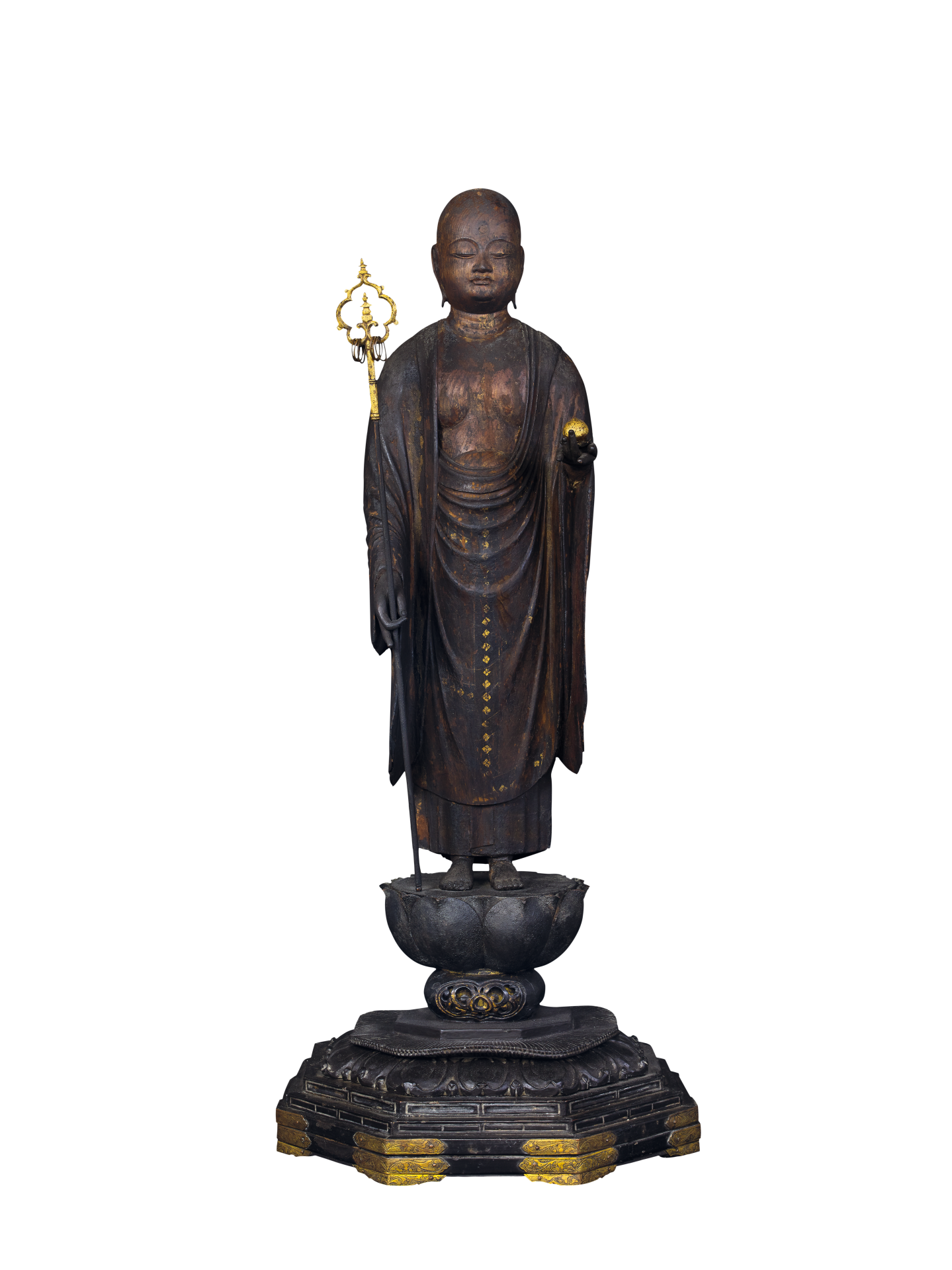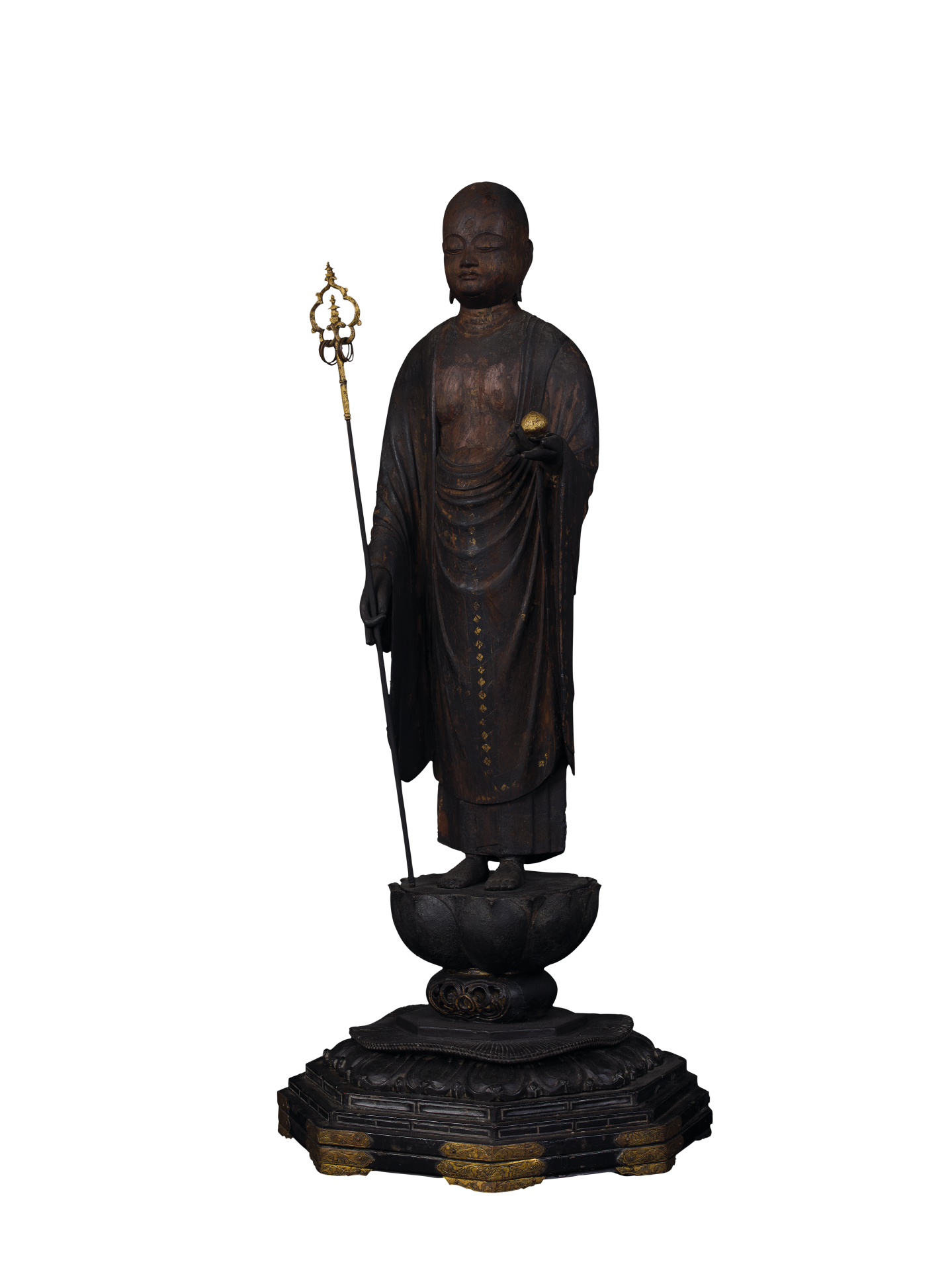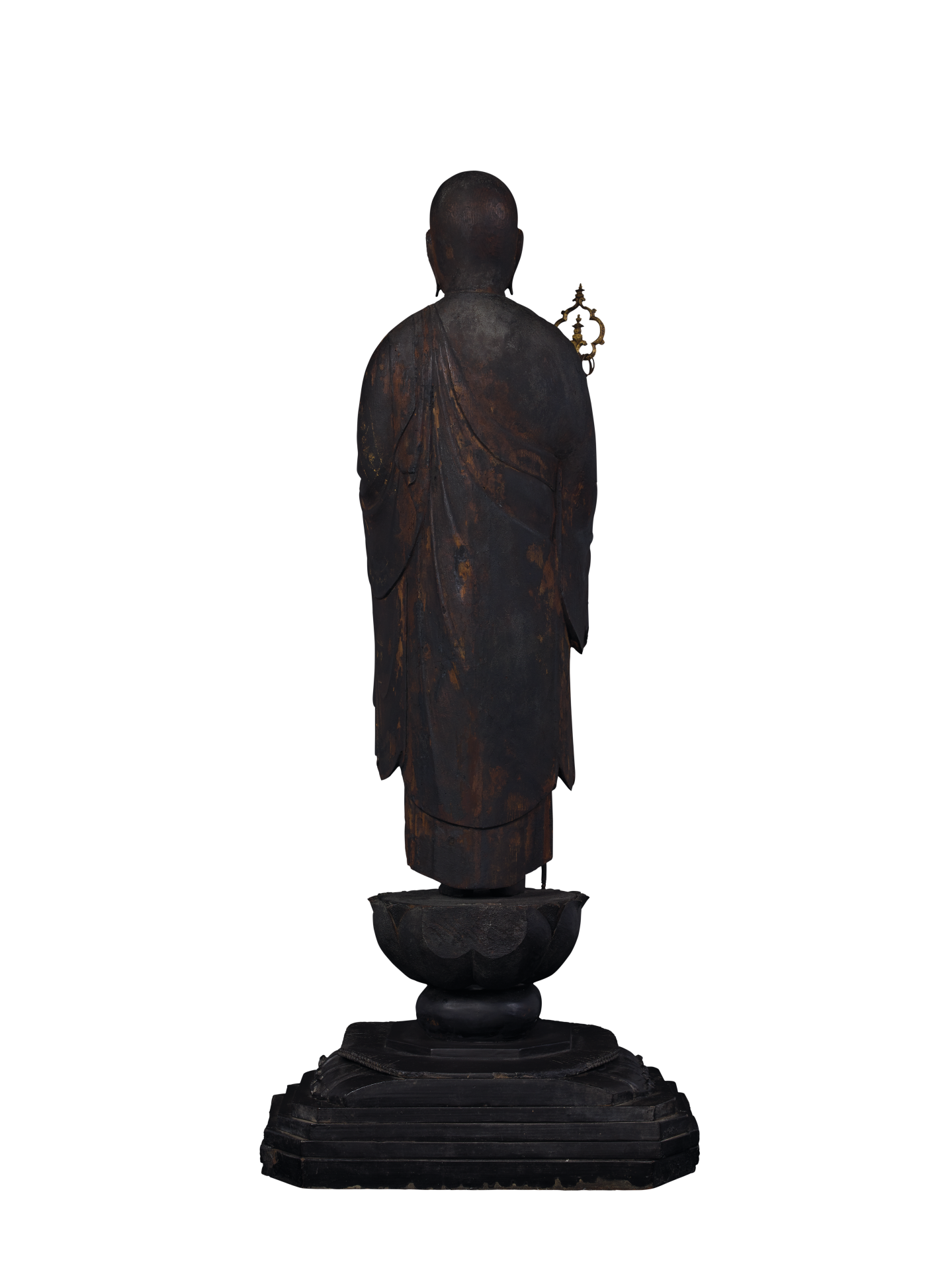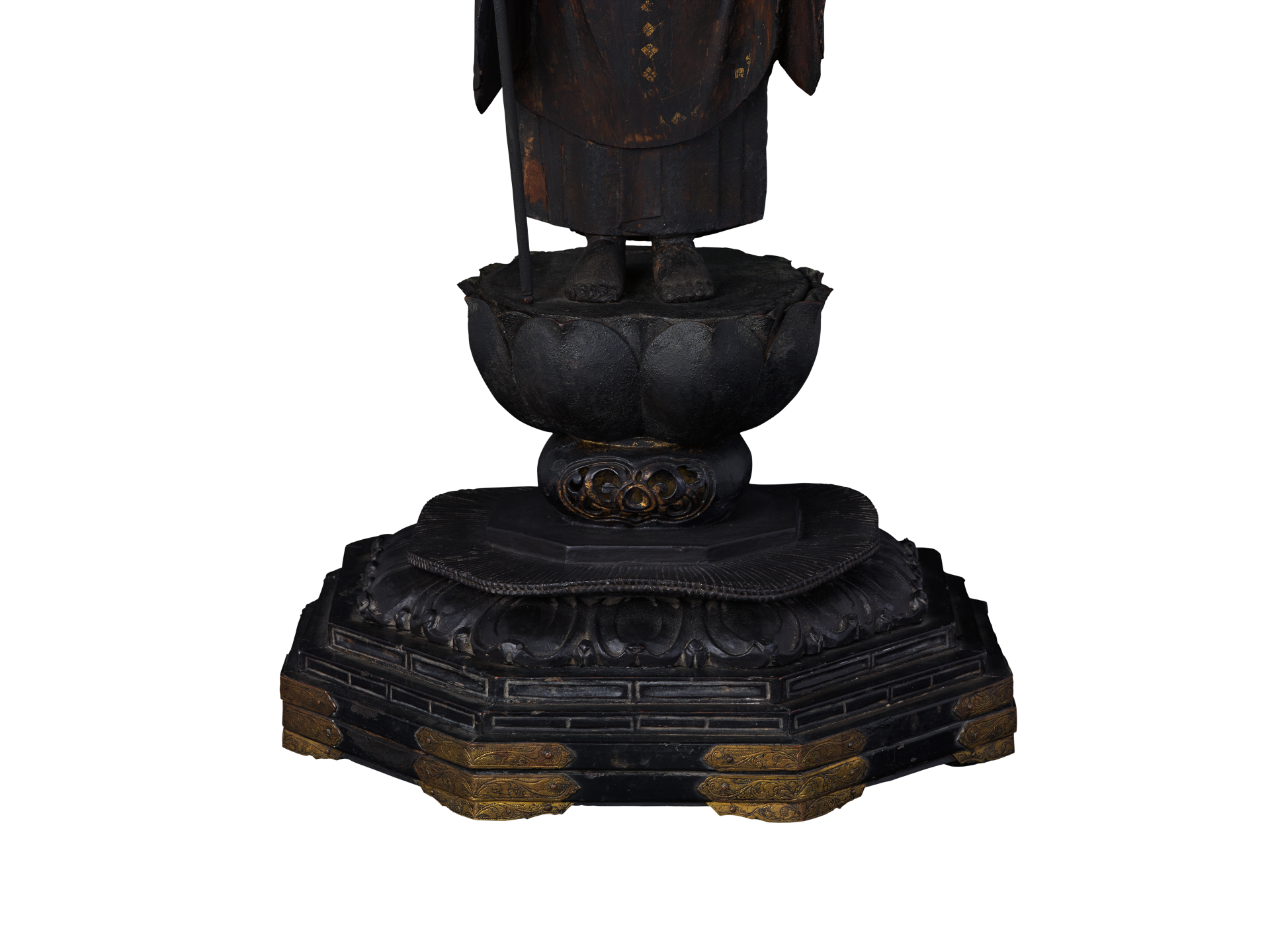Standing Kṣitigarbha Bodhisattva
Kṣitigarbha, The Earth Treasury, is the name of the Bodhisattva who is said to be “steady and immovable as the earth; discreet and deeply seclusive like a secret treasury”. He had made many great vows many aeons ago. Eventually, after attaining the state of Bodhisattva, he was entrusted by Śākyamuni to take up the task of edifying all sentient beings in the Six Realms of Existence during the time between Śākyamuni’s death and Maitreya’s rebirth. Since he has vowed not to achieve Buddhahood until all hells are emptied, he is also venerated as the Lord of Hell. He is also an extremely important Bodhisattva with profound influence on Chinese and Japanese Buddhism.
This Kṣitigarbha statue has a monk image. The six rings at the top of the metal staff carried in his right hand symbolise all beings in the Six Realms of Existence. The raised left hand holds a wish-fulfilling jewel (cintāmaṇi). According to Buddhist text, he “holds the wish-fulfilling jewels in his two hands” and “fulfils wishes as the wish-fulfilling jewel does”. The wish-fulfilling jewel thus became his important attribute. He has a round shaven head, an oval face with well-proportioned facial features, an ūrṇā originally set in the forehead, crescent-moon eyebrows, long narrow downcast eyes with straight slits, together with a solemn and dignified countenance.
He wears a kāṣāya exposing the thick solid chest. The belly is slightly bulging. Since the chest line is relatively low, the muscles appear to be sagging. The drapery is represented by fluidly rendered cord-like ridges. The original lacquered surface of the robe has been blackened due to centuries-long exposure to incense smoke. The robe is uniquely decorated using a traditional Japanese gilding technique called kirikane (literally, ‘cut gold’). The Bodhisattva is standing on a beautifully crafted waisted pedestal whose upper section resembles a full-blown lotus with upward-facing thick broad petals with slightly upturned tips. The lower section, in a lotus shape, is flattened with downward-facing petals. The hollow waist is carved with openwork tendril motifs. Below the lotus pedestal is an octagonal stepped base with corners reinforced by gilt metal brackets chiselled with tendril and fish-roe motifs.



